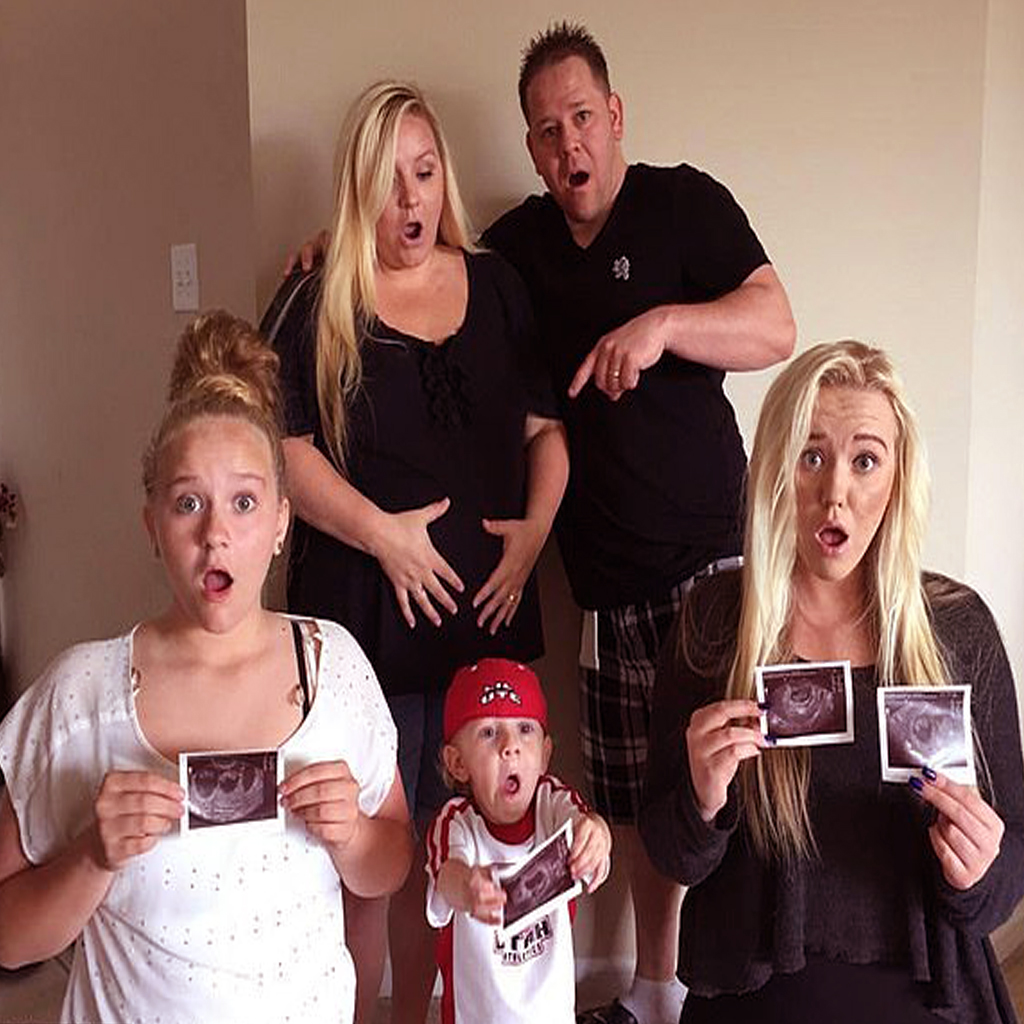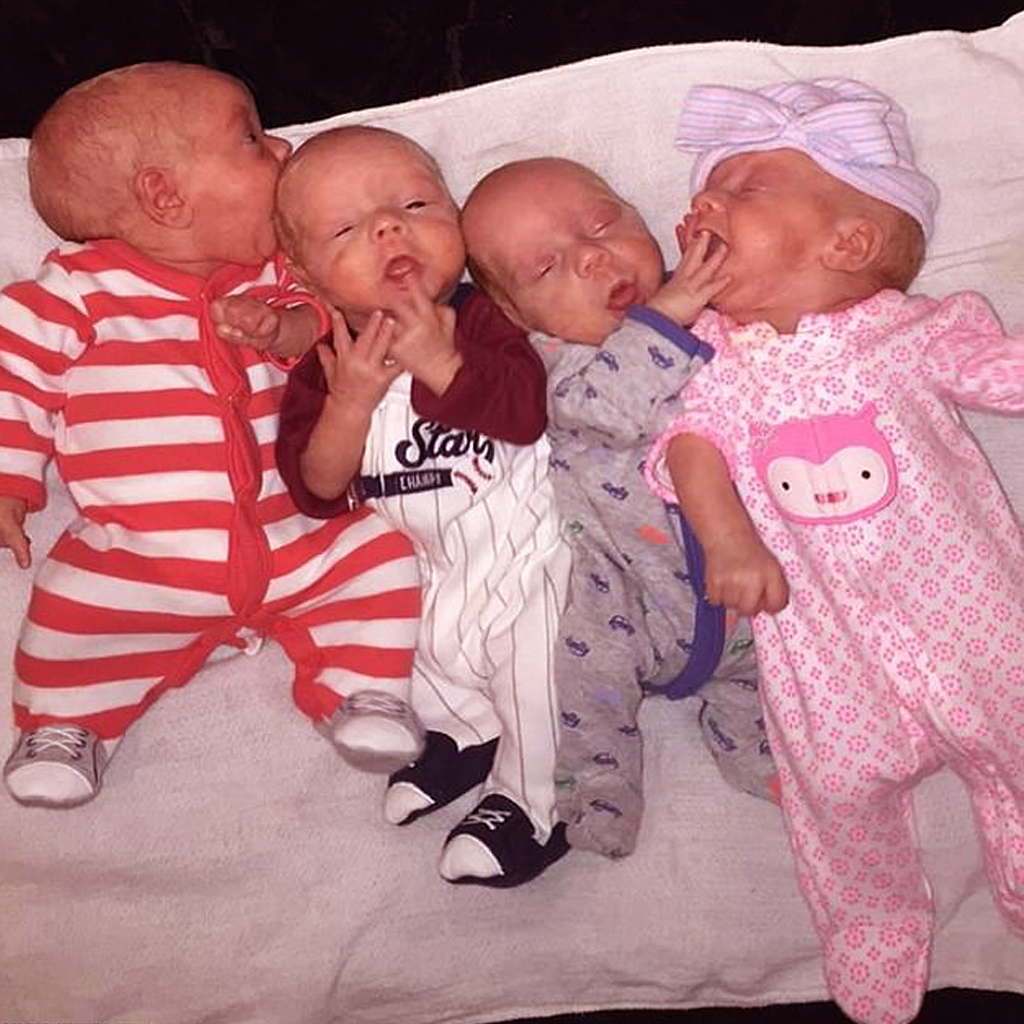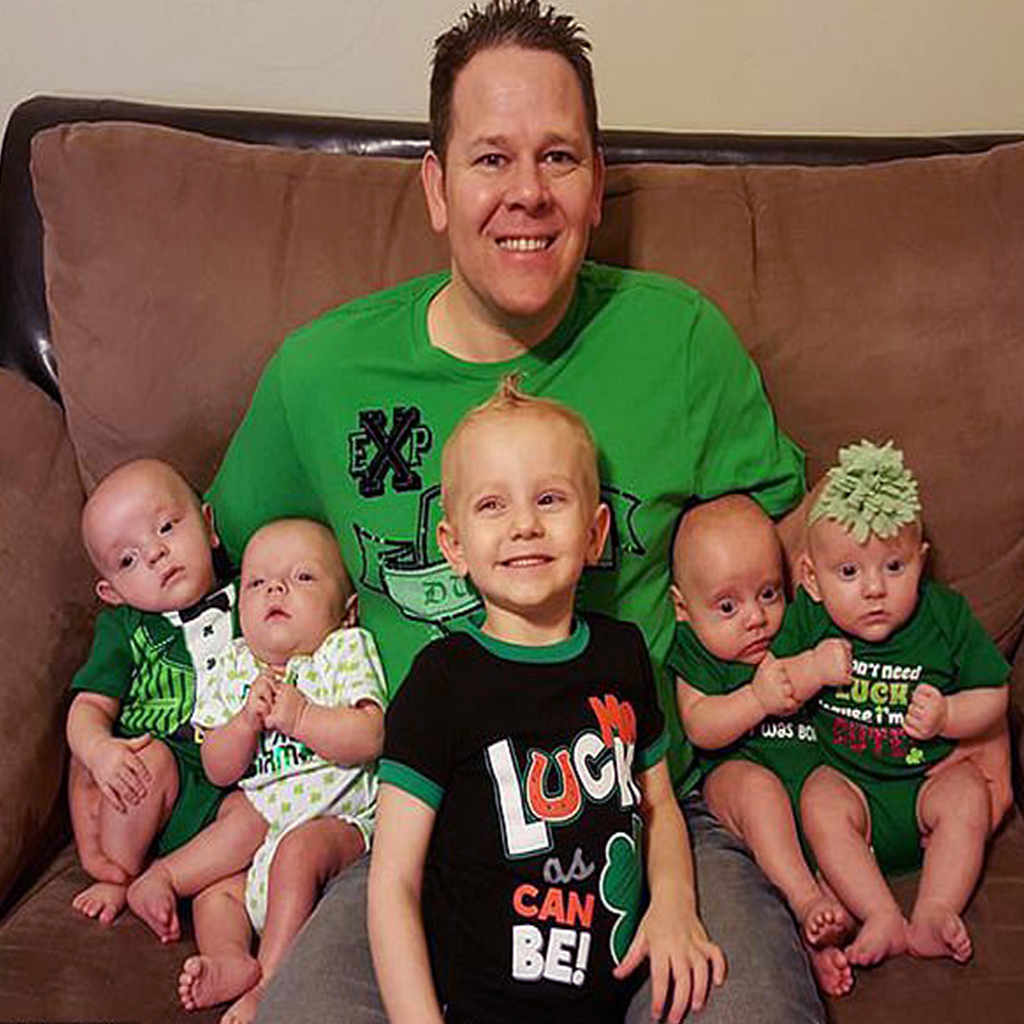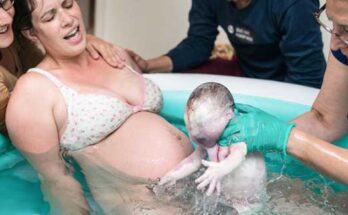After having three children, a mother yearned for a larger family, and after six heartbreaking losses, her prayers were eventually granted when she gave birth to quadruplets. When their four youngest children were little, childhood friends April, 42, and Phil Gardner, who now spend $400 per week on food, were teenagers. They also slept for only 45 minutes at night. Rilee, their firstborn, is now 24 years old. Whitlee, 18, Jaxton, 7, and the quadruplets Ryker, Tallon, Bowen, and Berklee, who are now 4 years old, were their cubs before they grew.
April, who has polycystic ovarian disease and endometriosis, both of which affect fertility, had four children after six marriages thanks to hormone shots that stimulate the ovaries. I don’t understand why suddenly I can’t have children because I’ve had kids in the past. I asked, “What’s wrong with you?” to myself. However, something inside of me compelled me to continue. They first met at school in April of last year and fell in love before learning they were expecting when she was 18 years old. Phil, 43, had recently retired from an Air Force communications position. They are eager to become parents because, despite their youth, they are certain that they want to spend the rest of their lives together.
With no immediate plans to expand the family, it wasn’t until six years later, while residing in Utah, that April’s first miscarriage—which occurred so early in her pregnancy that she wasn’t even aware she was expecting—became an issue. I went to the doctor because I was bleeding, and he informed me that I had miscarried. She admitted, “I didn’t even realize I was pregnant. The couple were thrilled to welcome Whitlee into the world in 2002, shortly after becoming pregnant once more. That gave me comfort in knowing that, perhaps, the miscarriage was an isolated incident rather than the start of my endometriosis-related fertility issues, she continued.
However, April and Phil had no idea that in 2005, when Whitlee was about three years old, they had started talking about giving her a baby sibling it would be 11 long years before a third baby was born.
Soon after they began trying, around August 2005, April got pregnant. However, she miscarried again eight weeks later. April discovered she was pregnant once more six months later, in the beginning of 2006, but she was too terrified to tell anybody but Phil. Tragically, she began experiencing pains at just six weeks and later learned she had miscarried. Midway through 2007, after eight months of trying, April went to see her doctor for help. There, it was learned that she had a serious case of endometriosis. But regrettably, between 2008 and 2010, April experienced two additional miscarriages, one at week 8 and the other at week 10. My fourth month’s first ten weeks were challenging. I’m pretty annoyed by that, she remarked. ‘The second trimester was very near for me. I was almost out of the scary zone and then things went awry.’
Over the years, April also tried a variety of fertility medications, including the medicine clomifene, which promotes monthly ovulation, but none of them were successful. She conducted several tests to try and pinpoint the root of her issues and found that she had low amounts of the hormone progesterone, which aids in preparing the body for a potential pregnancy later. In order to work for Phil, April and her family relocated to Alabama in 2010. There, she discovered a reproductive clinic that would accept her health insurance, allowing her to receive specialized care. After three months of receiving follistim and progesterone injections as prescribed to help stimulate her ovaries, she became pregnant before suffering her fifth loss six weeks later. Keeping up the injections, April fell pregnant three more times.
“All miscarriages are the same – the weird feeling that something is wrong, then the cramps and the sinking feeling when you realize the baby is gone,” she says.
In 2012, after receiving injections at the fertility clinic, April discovered she was pregnant again. And this time, she held her full-term baby, baby Jaxton was born in February 2013. She recalls: ‘With the children I lost, I felt something was wrong. I was afraid to do anything, afraid to tell anyone. But with Jaxton, that feeling is gone. Pregnancy is perfect. Once I passed the 10-week mark – the most recent of which I had a previous miscarriage – I felt unstoppable. When he was born, Phil was deployed, so he had to follow the birth using Skype. It was still the most magical moment. The love I felt when I held him was indescribable.
After that, the couple did not think they would have any more children. However, in early 2015, they realized the age gap was too big between Jaxton and his sisters and decided they wanted to give him a sister to grow up with. So when she returned to the same fertility clinic in Alabama that had helped them before, April started injecting again with fertility drugs and progesterone – conceiving after just two months, only to surprise her with her second pregnancy. Yin was performed at her sixth week. Four of the fetuses are functioning well, but two have no heartbeat – leaving April to make a difficult decision.
The doctors told me about something called selective reduction, which basically reduces the number of fetuses to give the other fetus the best chance of survival.
But the remaining four babies are growing up healthy – giving April the confidence to tell the family at 13 weeks. But the remaining four babies are growing up healthy – giving April the confidence to tell the family at 13 weeks. Thankfully, April’s closely monitored pregnancy progressed very well. After hearing about her story, several other military families even got together to donate baby items for her. Then, at 30 weeks and two days, she finally gave birth to her four non-identical quadrilaterals — three boys and a girl — at East Baptist Medical Center in Montgomery, Alabama using the method. cesarean section, just after 6:30 a.m. on October 16, 2015. First it was Ryker, who weighed 3lb 1oz, followed by Tallon who weighed 2lb 12oz, then Bowen and finally the only girl, Berklee – both both weigh 2lb 8oz.
‘Each of them let out a cry when they came out, which filled me with relief. I knew that, after everything, they were here and healthy,’ she said.









